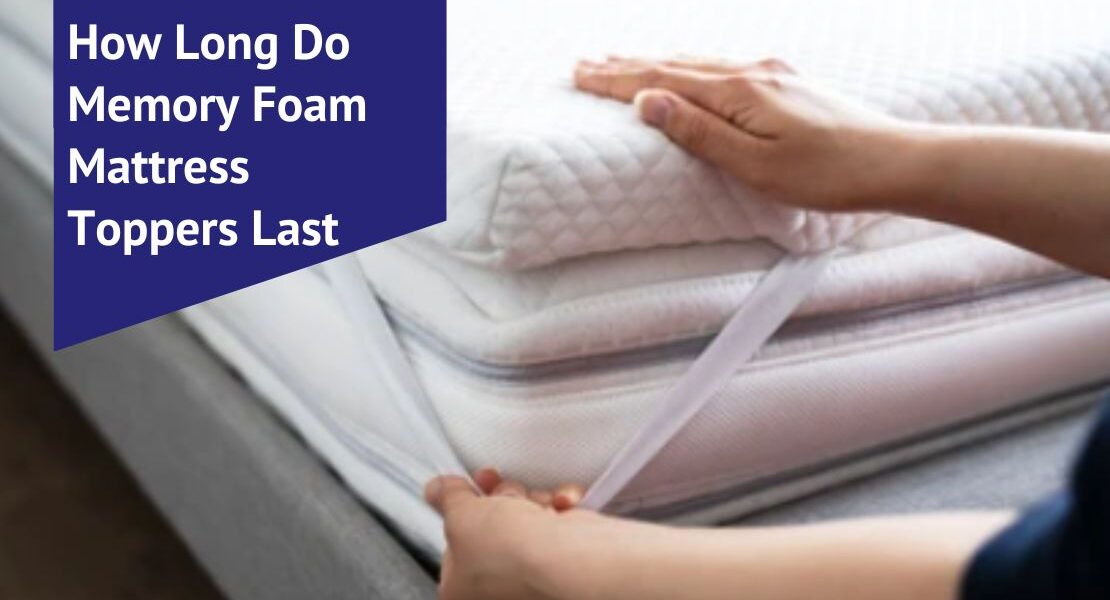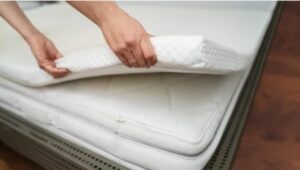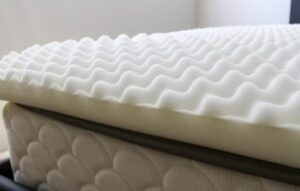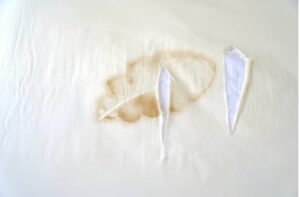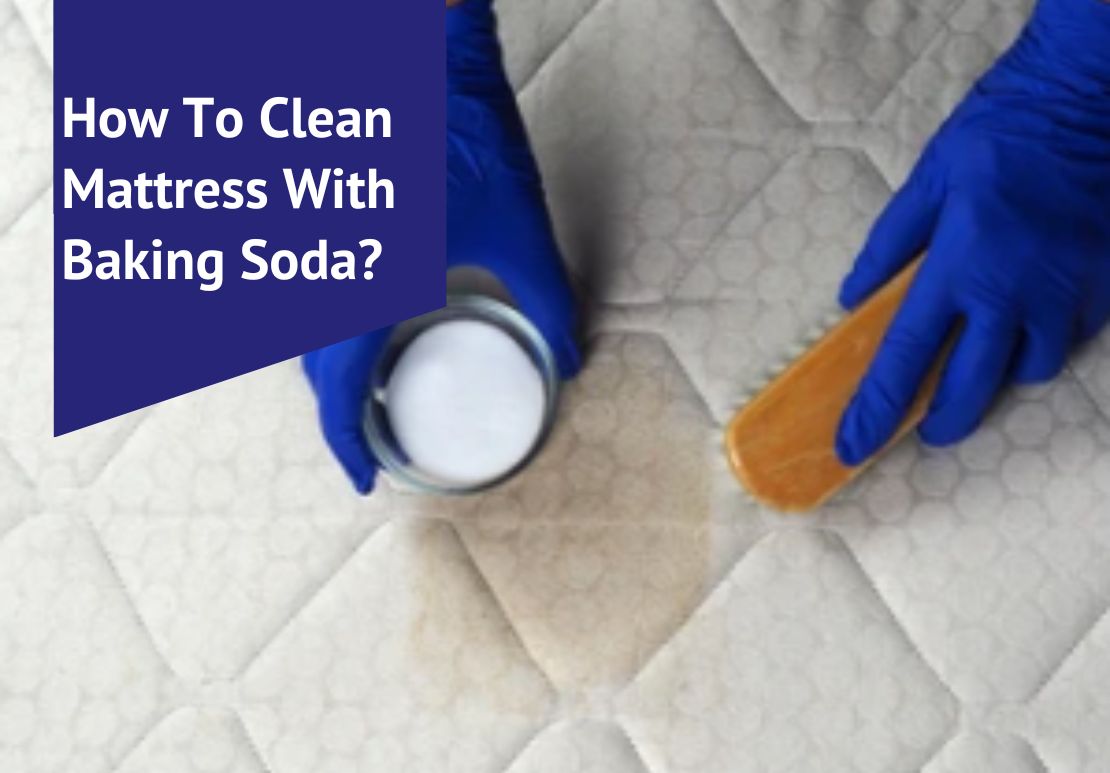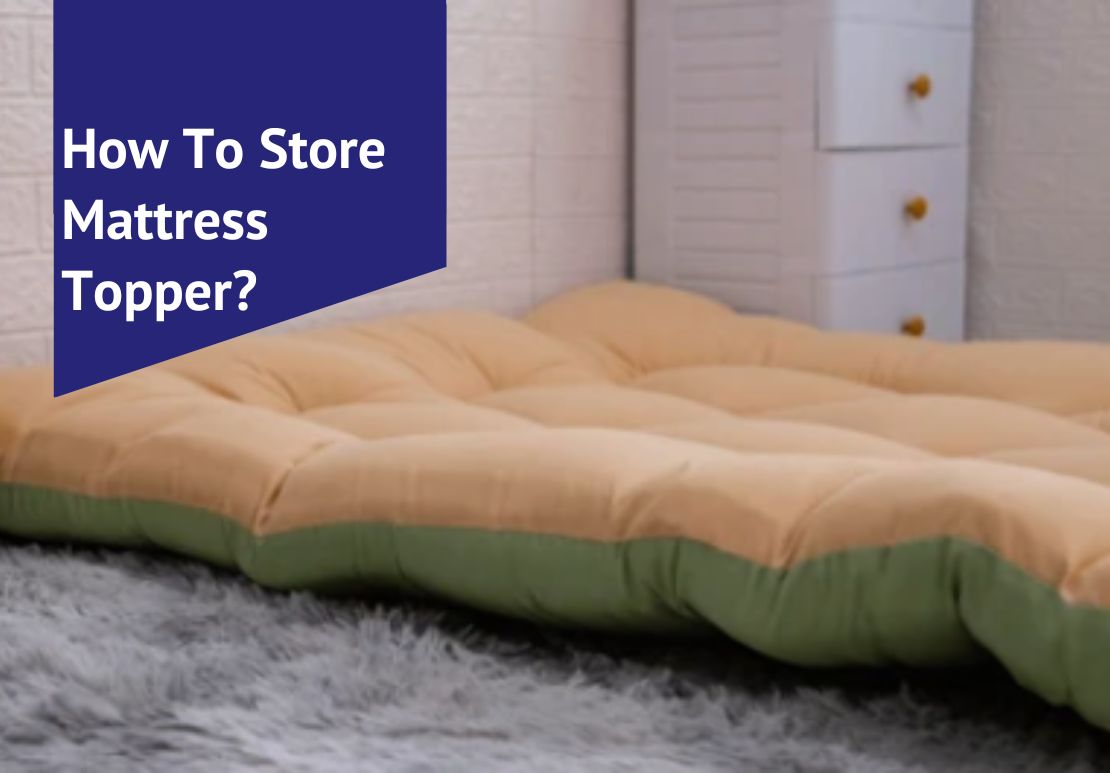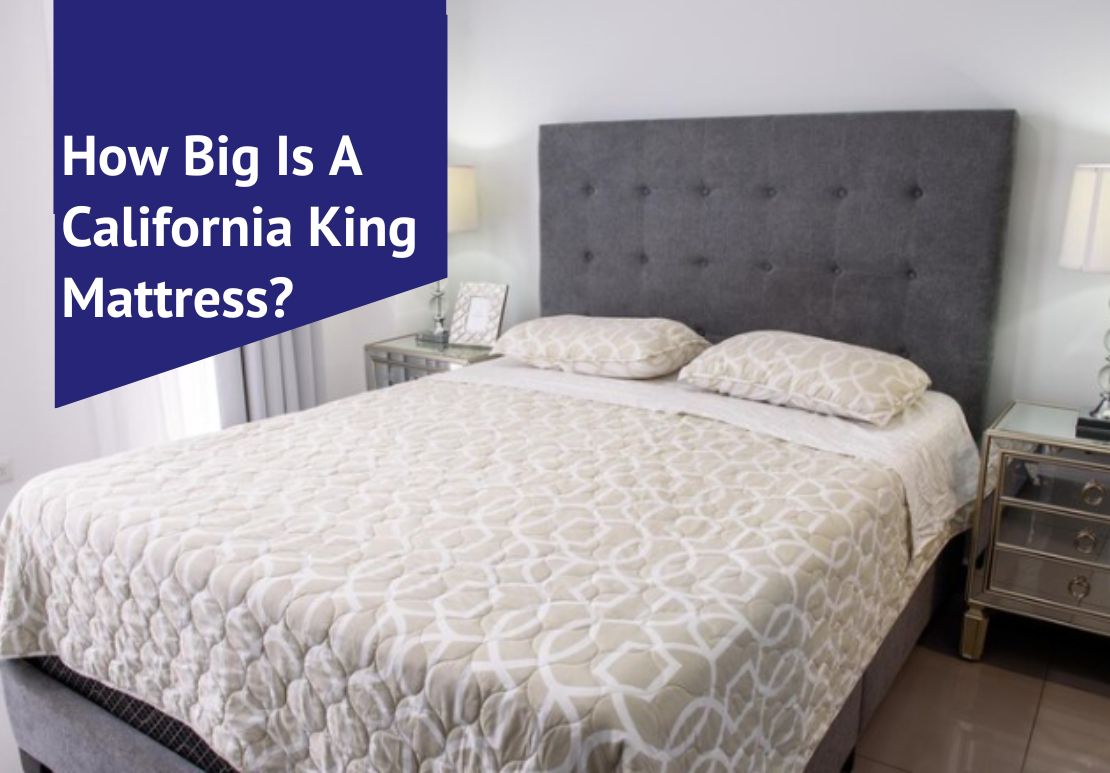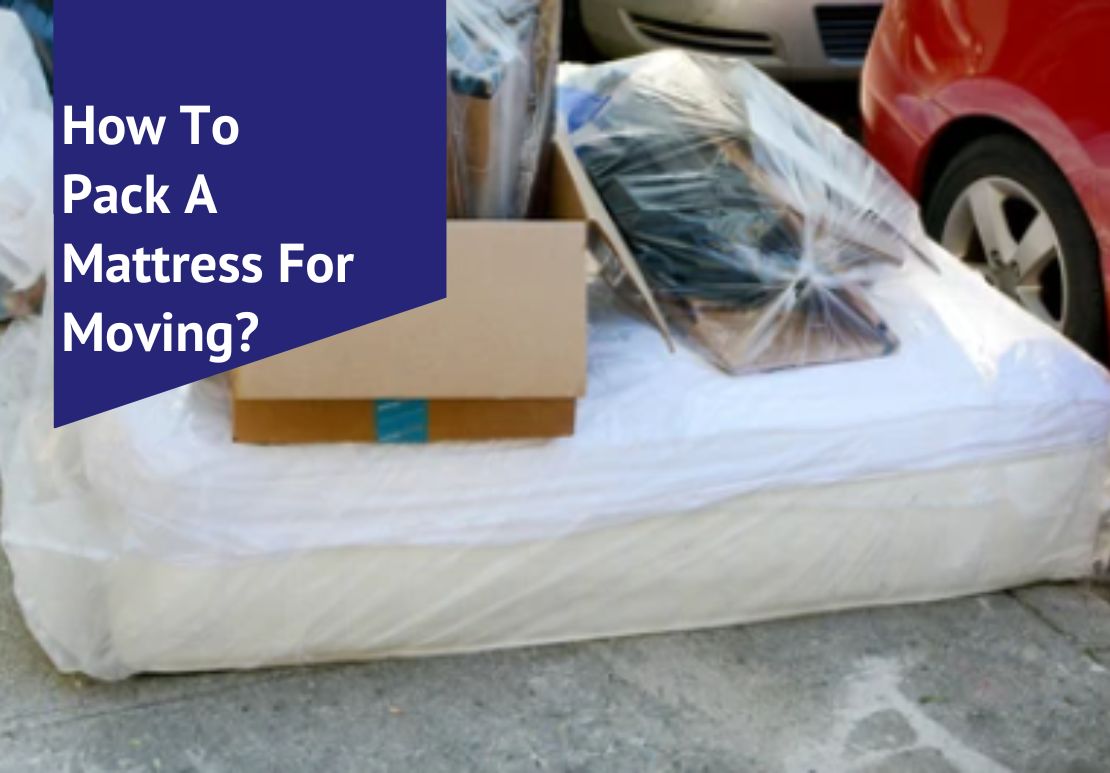Is your memory foam mattress topper not as springy or comfortable as it used to be? There can be a chance that it has crossed its average lifespan.
A typical memory foam mattress topper should last between three and five years. Therefore, to learn how to maintain a mattress topper and how to replace it effectively, keep reading this article. This article offers valuable insights into the lifespan of various types of mattress toppers, how they can be maintained for longevity, and crucial signs that indicate it’s time for a replacement.
Dive in now for these enlightening tips on ensuring you get a good night’s sleep every single night!
Table of Contents
Key Takeaways
- Memory foam mattress toppers typically last between three to five years with regular use, but high-quality ones can last up to five years or more.
- The type of mattress topper you choose will affect its lifespan, with latex and wool toppers lasting longer compared to feather and egg crate toppers.
- Factors like usage frequency, quality of materials, body weight, and cleaning and maintenance practices can influence how long a mattress topper lasts.
- Signs that indicate it’s time for a replacement include visible wear and tear, loss of support and comfort, unpleasant odors, and allergies or respiratory issues.
Types of Mattress Toppers and Their Lifespan
There are several types of mattress toppers available, each with its own lifespan.
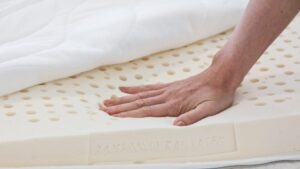
Latex toppers
Latex toppers are a good pick. They can stay in shape for up to 10 years. This kind of topper adjusts well with your body shape. It gives you the right support while you sleep. Know that some latex toppers can wear out faster than others, but with the right care, they will last longer.
Memory foam toppers
Memory foam toppers have a lifespan of three to five years. They are very popular and loved by many homeowners. These toppers mold to your body shape for comfort. But they need good care and right use for them to last long.
Good care can even add more years to its life.
It is also important to note the quality of the material in a memory foam topper. High-quality ones will serve you up for about five years, even if they cost more money. Meanwhile, the viscoelastic foam type may wear out faster within an 18-36 month time frame because it’s not as strong as other types like Tempur-Pedic foam.
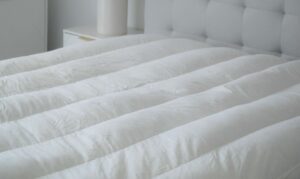
Feather toppers
Feather toppers are a good choice for people who love soft beds. They have feathers from ducks or geese inside them. These toppers usually last for about three years but could go up to five years with proper care.
Feather toppers can flatten over time, so fluffing them often will help keep their shape. Always handle them gently while cleaning, as they can get damaged easily.
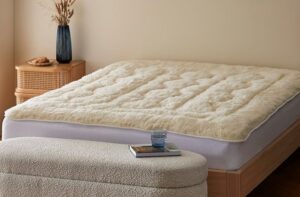
Wool toppers
Wool mattress toppers are a popular choice because they provide natural insulation and breathability. They can help regulate body temperature and keep you cozy in the winter months.
Wool toppers are known for their durability, often lasting up to 8-10 years if well-maintained. This is due to the resilient nature of wool fibers, which can withstand regular use without losing their shape or support.
Additionally, wool has natural moisture-wicking properties that make it resistant to mold, mildew, and dust mites. By regularly flipping and rotating your wool topper and following proper cleaning instructions, you can ensure its longevity and continued comfort for many years.
Egg crate toppers
Egg crate toppers are a popular choice for those looking for affordable mattress comfort. These toppers have a lifespan of around two to three years, which is shorter compared to other types of mattress toppers.
While they may not last as long, egg crate toppers can still provide some additional cushioning and support to your bed. Just keep in mind that over time, the foam in these toppers may lose its shape and become less effective at providing comfort.
So if you start noticing visible wear and tear or your sleep quality is affected, it might be time to consider replacing your egg crate topper.
Factors That Influence Mattress Topper Lifespan
Usage frequency, quality of materials, body weight, and cleaning and maintenance all play a role in determining how long a mattress topper will last.
Usage frequency
Using a memory foam mattress topper every night can affect its lifespan. The more frequently you use it, the faster it may wear out. On average, a memory foam topper lasts between three to five years with regular use.
Some high-quality ones made with expensive materials may last up to five years. However, even with good care and maintenance, it’s important to keep in mind that these toppers have a limited lifespan.
Quality of materials
The quality of materials used in a mattress topper plays a crucial role in determining its lifespan. Cheaper or lower-quality materials tend to wear out more quickly, leading to a shorter lifespan for the topper.
On the other hand, mattress toppers made with high-quality and durable materials can last longer, sometimes up to 8-10 years. It’s important to invest in a mattress topper that is made with long-lasting materials if you want it to withstand regular use over an extended period.
Body weight
The weight of your body can also impact the lifespan of your mattress topper. If you are on the heavier side, the topper may wear out more quickly due to increased pressure and strain.
This can cause the foam or materials to break down faster, leading to decreased support and comfort. It’s important to consider your body weight when purchasing a mattress topper and choose one that is designed to handle heavier loads.
By selecting a suitable option and taking good care of it, you can help extend its lifespan and get the most out of your investment in a mattress topper.
Cleaning and maintenance
To keep your memory foam mattress topper in good condition and extend its lifespan, regular cleaning and maintenance are necessary. Start by following the manufacturer’s instructions for cleaning the topper.
Usually, spot cleaning with a mild detergent and water is sufficient. Avoid using harsh chemicals or bleach as they can damage the foam. After spot cleaning, make sure to air out the topper and let it dry completely before putting it back on your bed.
In addition to regular cleaning, it’s also important to protect your mattress topper from spills, stains, and allergens. Consider using a mattress protector that is waterproof and hypoallergenic.
This will help prevent any liquids or dust mites from seeping into the foam.
Remember that rotating or flipping a memory foam mattress topper may not be necessary for its longevity, unlike traditional mattresses. Memory foam tends to contour specifically depending on body shape and movement patterns over time.
Keep this in mind when caring for your topper.
Signs That Your Mattress Topper Needs Replacement
If you notice visible wear and tear, loss of support and comfort, unpleasant odors, or experience allergies or respiratory issues with your mattress topper, it may be time for a replacement.
Discover more signs indicating the need for a new mattress topper in this blog post!
Visible wear and tear
Memory foam mattress toppers, like any other product, will eventually show signs of wear and tear over time. You may notice visible changes in the appearance of your topper, such as sagging or indentations.
These can occur due to the constant pressure and weight placed on the topper while you sleep. Even though memory foam is designed to bounce back slowly, it can lose its ability to fully recover over time.
This can lead to a less comfortable sleeping surface and may affect the support it provides for your body. When you start noticing these visible signs of wear and tear, it’s a good indication that it’s time to replace your memory foam mattress topper with a new one for better comfort and support during sleep.
Loss of support and comfort
A memory foam mattress topper is designed to provide support and comfort for a good night’s sleep. However, over time, it may start losing its supportive qualities and become less comfortable.
This can happen due to the natural wear and tear of the material. As the foam breaks down, it may lose its ability to contour to your body shape effectively, resulting in reduced support.
Additionally, as the topper ages, it might develop indentations or sagging areas that can affect its overall comfort level. If you notice a significant loss of support or find yourself waking up with discomfort or pain on your mattress topper, it may be time for a replacement.
Unpleasant odors
Memory foam mattress toppers, like any other bedding product, can develop unpleasant odors over time. This can be caused by various factors such as sweat, body oils, and spills that seep into the foam.
Additionally, mold and mildew may also contribute to these unwanted smells. To prevent and eliminate odors from your memory foam topper, it is important to follow proper cleaning and maintenance practices.
Regularly airing out the topper and sun-drying it can help remove any trapped moisture or odor-causing agents. Using baking soda or a mild detergent during cleaning can also effectively neutralize odors.
Allergies or respiratory issues
Memory foam mattress toppers can be beneficial for people with allergies or respiratory issues. These toppers are made of a dense foam material that is resistant to dust mites and allergens, which can help reduce allergic reactions.
Additionally, memory foam is known for its ability to contour to the body and provide support, which can alleviate pressure points and promote proper spinal alignment. This can lead to better breathing and less strain on the respiratory system during sleep.
It’s important to note that regular cleaning and maintenance of the mattress topper is necessary to ensure its effectiveness in reducing allergens and maintaining good air quality.
Tips for Extending Mattress Topper Average Lifespan
To extend the lifespan of your mattress topper, avoid eating in bed and keep pets off the bed. Regularly flip and rotate the topper and use a mattress protector for added protection against spills and stains.
No eating in bed
Eating in bed can be tempting, but it’s not a good idea if you want to prolong the lifespan of your mattress topper. When you eat in bed, crumbs and spills can end up on the topper, which could attract pests or cause stains that are difficult to remove.
Additionally, eating in bed increases the risk of accidents and damage to your mattress topper. It’s best to keep food and drinks in designated areas away from your sleeping surface for better longevity and cleanliness.
Keep pets off the bed
To extend the lifespan of your mattress topper, it’s important to keep pets off the bed. While we love our furry friends, their presence on the bed can cause damage and wear out the topper more quickly.
Pets may shed fur or have accidents that can stain or soak into the topper material. Their claws and nails can also puncture or tear the fabric, leading to visible wear and tear. By creating a pet-free zone on your bed, you’ll be protecting your mattress topper from unnecessary damage and ensuring it lasts longer.
Regular flipping and rotation
To keep your memory foam mattress topper in good condition, it’s important to regularly flip and rotate it. This helps to distribute the weight evenly and prevent sagging in certain areas.
While flipping and rotating may not necessarily extend the lifespan of your topper, it can help maintain its comfort and support for a longer period. By doing this every few months or as recommended by the manufacturer, you can ensure that your mattress topper remains in good shape for a better night’s sleep.
Use a mattress protector
To protect your memory foam mattress topper and extend its lifespan, it’s a good idea to use a mattress protector. This protective cover acts as a barrier between your topper and any potential spills, stains, or allergens.
It can help prevent liquids from seeping into the foam and causing damage. Additionally, a mattress protector can keep dust mites, bacteria, and allergens at bay, making it especially beneficial for those with allergies or asthma.
By using a mattress protector regularly and washing it as needed, you can ensure that your memory foam topper stays clean and in good condition for longer.
Best Practices for Cleaning and Maintaining The Lifespan of a Mattress Topper
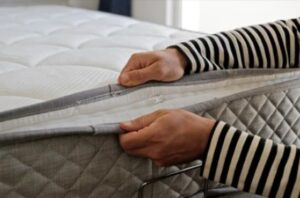
To ensure the longevity and cleanliness of your mattress topper, it is important to follow best practices for cleaning and maintenance.
Follow the manufacturer’s instructions
To ensure the longevity and effectiveness of your mattress topper, it is important to follow the manufacturer’s instructions. These instructions are specifically designed for that particular type of topper, taking into account its materials and construction.
By following these instructions, you can avoid damaging the topper or voiding any warranty that may be in place.
For example, some memory foam toppers may need time to fully expand after being unpacked. The manufacturer’s instructions will guide how long this process might take.
They may also specify whether or not flipping or rotating the topper is necessary for its maintenance.
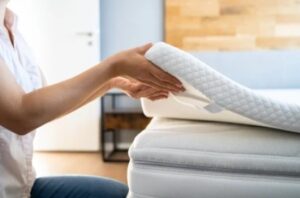
Use gentle cleaning methods
To keep your mattress topper clean and in good condition, it’s important to use gentle cleaning methods. Avoid using harsh chemicals or abrasive cleaners that can damage the fabric or foam.
Instead, opt for mild soap and water solutions or enzymatic cleaners specifically designed for mattress toppers. Gently blot the surface of the topper with a clean cloth or sponge, being careful not to rub too vigorously.
After cleaning, allow the topper to air dry completely before placing it back on your bed. Remember, proper cleaning techniques will help prolong the lifespan of your mattress topper and ensure that it stays fresh and comfortable for years to come.
Air out and sun-dry the topper
To maintain the lifespan of your mattress topper, it’s important to air it out and sun-dry it regularly. This helps to keep it fresh and prevents mold or mildew growth. When you remove the topper from your bed, place it in a well-ventilated area, such as outside on a sunny day or near an open window.
Allowing the fresh air and sunlight to circulate around the topper helps eliminate any trapped moisture or odors. Just be sure not to leave it exposed for too long, as excessive sunlight exposure can cause damage.
Airing out and sun-drying your mattress topper is a simple yet effective way of maintaining its cleanliness and prolonging its durability.
When to Replace Your Mattress Topper
It is recommended to replace your mattress topper every 2-3 years on average, or when it no longer provides the necessary support and comfort for a good night’s sleep.
Every 2-3 years on average
On average, memory foam mattress toppers will last around 2-3 years. This means that after this time, it’s a good idea to consider replacing your topper. Even though high-quality memory foam toppers can be expensive and made with durable materials, they still have a limited lifespan.
The wear and tear from regular use can affect their ability to provide support and comfort over time. However, with proper care and maintenance, you may be able to extend the longevity of your mattress topper beyond the average timeframe.
Just keep in mind that factors such as usage frequency, body weight, and cleaning habits can also influence how long your mattress topper lasts.
When it no longer provides support
A memory foam mattress topper is designed to provide support and enhance comfort while you sleep. However, over time, it may start to lose its ability to offer the necessary support.
This can happen due to wear and tear or the natural breakdown of materials. When your mattress topper no longer provides adequate support, you may notice that you wake up with aches and pains or experience discomfort throughout the night.
It’s important not to ignore these signs as they indicate that it’s time for a replacement. By replacing your worn-out mattress topper, you can ensure that you continue getting restful and comfortable sleep each night.
When it affects your sleep quality
If your memory foam mattress topper starts affecting your sleep quality, it’s a sign that it may need to be replaced. A worn-out or sagging topper can cause discomfort, lack of support, and disturb your sleep.
Over time, the materials in the topper break down and lose their ability to provide proper cushioning and pressure relief. This can lead to body pain, restless nights, and difficulty falling asleep.
To ensure you get a good night’s sleep, pay attention when your mattress topper no longer provides the comfort and support you need for restful slumber.
Debunking Myths about Mattress Toppers to maintain your mattress topper
Many people have misconceptions about mattress toppers, such as whether they can be used on the floor or with an electric blanket. Read on to separate fact from fiction and learn more about how to properly care for your mattress topper.
Can they be used on the floor?
Memory foam mattress toppers are designed to be used on top of a mattress for added comfort and support. They are not recommended for use directly on the floor. This is because memory foam needs a solid base, like a mattress, to properly distribute weight and provide proper support.
Using a memory foam topper on the floor can result in less support and may cause discomfort or pain while sleeping. It is best to use memory foam mattress toppers as intended, on top of a traditional mattress, for optimal comfort and durability.
Can they be used as a mattress?
Memory foam mattress toppers are not designed to be used as a standalone mattress. They are meant to enhance the comfort and support of an existing mattress. While they can provide some added cushioning, they do not offer the same level of support as a full-sized memory foam mattress.
It’s important to remember that using a memory foam topper alone may not provide adequate spinal alignment or pressure relief, which can affect your sleep quality in the long run.
Can they be used with an electric blanket?
Using a memory foam mattress topper with an electric blanket is generally not recommended. The heat from the electric blanket can cause the memory foam to become too soft and lose its supportive qualities.
This could affect the overall comfort and effectiveness of the topper. Additionally, excessive heat exposure may shorten the lifespan of the memory foam. It’s best to consult the manufacturer’s instructions or contact customer support for specific recommendations on using an electric blanket with your memory foam mattress topper.
The Importance of a Good Mattress Topper for a Good Night’s Sleep

A good mattress topper is essential for a restful night’s sleep, providing improved comfort and support while reducing allergies and respiratory issues caused by dust mites or mold.
Improved comfort and support
Memory foam mattress toppers provide improved comfort and support, making your sleep experience more enjoyable. The soft and contouring nature of memory foam allows it to mold to your body shape, providing customized support for different pressure points.
This helps relieve pain and discomfort, especially for those with back or joint problems. The cushioning effect of the memory foam also adds an extra layer of comfort to your mattress, enhancing its overall plushness.
With a memory foam mattress topper, you can expect a more restful and comfortable sleep each night.
Reduced allergies and respiratory issues
Using a memory foam mattress topper can help reduce allergies and respiratory issues. Memory foam is known for its hypoallergenic properties, meaning it is less likely to trigger allergies or asthma symptoms.
This is because memory foam is resistant to dust mites, mold, and other allergens that can accumulate in traditional mattresses or older mattress toppers. By using a memory foam topper, you create a barrier between yourself and these potential allergens, promoting better air quality and reducing the risk of allergic reactions or respiratory problems.
Extended life of your mattress
Taking care of your mattress topper not only extends its lifespan but also the life of your mattress. By using a mattress topper, you provide an extra layer of protection against wear and tear, spills, and stains.
This means that your mattress won’t have to bear the brunt of these issues directly, thereby preserving its quality for longer. Additionally, a high-quality mattress topper can help distribute weight evenly and reduce pressure points on your body.
This prevents excessive sagging or indentations in your mattress over time. So, by investing in a good mattress topper and taking proper care of it, you can enjoy a comfortable sleep surface while ensuring the longevity of both your topper and your mattress.
Better sleep quality
A good mattress topper can greatly improve the quality of your sleep. Memory foam toppers, in particular, offer excellent support and comfort, allowing for better sleep throughout the night.
The viscoelastic foam used in memory foam toppers conforms to your body shape, relieving pressure points and reducing tossing and turning. This can help alleviate discomfort and promote deeper, more restful sleep.
With a memory foam mattress topper that is still within its lifespan, you can look forward to waking up feeling refreshed and rejuvenated each morning.
Conclusion: Taking Care of Your Mattress Topper for Longevity and Comfort
In conclusion, memory foam mattress toppers typically last between three to five years. However, with proper care and maintenance, you can extend their lifespan. Remember to follow the manufacturer’s instructions for cleaning and flipping your topper regularly.
By taking care of your mattress topper, you can ensure both longevity and comfort for a good night’s sleep.
Frequently Asked Questions
How long does a memory foam mattress topper last?
A memory foam mattress topper can last for about 5-7 years with proper care and maintenance.
What factors affect the lifespan of a memory foam mattress topper?
Factors that can affect the lifespan of a memory foam mattress topper include the quality of the material, frequency and weight of use, and how well it is cared for (e.g., regular cleaning and rotating).
How do I know when it's time to replace my memory foam mattress topper?
It may be time to replace your memory foam mattress topper if you notice sagging or permanent indentations, significant loss of support or comfort, or if it becomes difficult to clean due to wear and tear.
Can I extend the lifespan of my memory foam mattress topper?
Yes, you can extend the lifespan of your memory foam mattress topper by using a protective cover, regularly rotating it every few months, keeping it clean, and avoiding excessive exposure to heat sources.
Are there any warranties for memory foam mattress toppers?
Some manufacturers offer warranties on their memory foam mattress toppers which typically range from 1-10 years. It's best tο check with thе manufacturer fοr specific warranty information.

